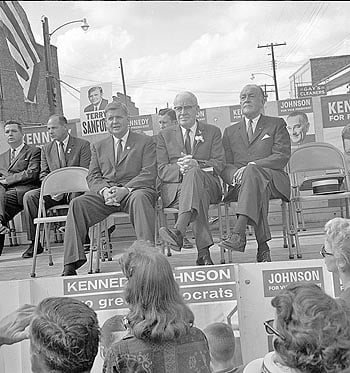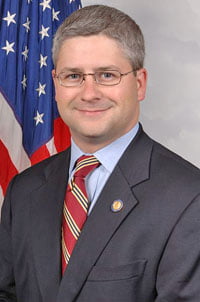North Carolina Becomes a Red State, Ending 50 Years as a Progressive Light in the South
by Moe White
In 2012, progressives across North Carolina celebrated as the Democratic National Convention came to Charlotte to nominate Barack Obama for a second term as President. That, however, was perhaps the only cause for celebration among the state’s Democrats. This same year, North Carolinians voted to amend our constitution to ban gay marriage; to increase the number of Republicans sent to the House of Representative from six to nine, decreasing Democratic numbers from seven to four; and to replace a Democrat with a Republican in the Governor’s mansion.
The state legislature voted to enact a voter ID law, to slash spending for public services, and to make it easier for private and home schools to grab public education money (though some of these bills were vetoed by Gov. Bev Perdue). Here in Buncombe County, the legislature has been using its absolute power to rob the city of Asheville of its airport, water department, and congressional seat. They also tried a state takeover of the Buncombe County Commission, by revoking voters’ right to elect 100 percent of their commissioners and letting them vote for only 43 percent of them.
Buncombe County Representatives, who were able to unilaterally bring about these changes despite the unanimous objection of the county’s other representatives in Raleigh, hoped to put the county’s government in Republican hands, a plan that might have succeeded if not for redistricters’ arrogance in trying to dilute the vote of Warren-Wilson College students into two separate districts. That split their vote and helped elect a fourth Democrat to a newly expanded seven-member board.
Nevertheless, Buncombe County is now represented by one Democratic state senator, Martin Nesbitt, one Democratic (Susan Fisher) and one Republican (Moffitt) state house members, and two Republican Congressmen (Mark Meadows and Patrick McHenry). The red takeover of Western North Carolina is almost complete.
Beginning shortly after World War II, North Carolina earned a reputation as a beacon of progress in a region best known for its determined, deliberate backwardness. Governors Kerr Scott (1949-52) and Luther Hodges (1954-60) were well-known as supporters of education and remarkably progressive Democrats for their era, both taking pro-equality positions on racial issues (though neither would come out fully for integration) and equal opportunity.
When Terry Sanford, an avid proponent of public education from early childhood through college and beyond, was elected in 1960, he gave voice to those who believed that liberal arts education was by necessity open-minded, and that prosperity shared by all citizens would make the state successful.

Sanford was a prototype for mid-century politicians throughout the country. He was an eagle scout, a graduate of UNC Chapel Hill (1939), an FBI agent, and a veteran (first an enlisted man and later an officer in WWII, during which he won a Bronze Star and Purple Heart). After the war he earned a law degree, set up a private practice, and in 1960 ran for governor. After his single term (all that was allowed in NC until the 1980s), he became president of Duke University, and later served as a U.S. Senator from 1986-1992. His was a life devoted to public service.
He was followed by governors in the same mold from both parties, including Democrats Dan Moore and Bob Scott, Republicans Jim Holshouser and Jim Martin, Democrat Jim Hunt, and, most recently, Beverly Perdue. And, despite NC Senators like Jesse Helms, John East, Lauch Faircloth, and other avowed segregationists who represented the state in Washington, at home policies were continually focused on improving education and opportunities for all.
Throughout that 60-year period of progressive ascendancy, the state was viewed as an anomaly in the South. It was the avatar of “the New South” that attracted businesses and executives and families and retirees from other parts of the country who saw opportunity without the stigma of Jim Crow and segregation. It was not a paradise for minorities, nor is it today – but compared to most of the rest of the old Confederacy, North Carolina was a place of hope.
When candidate Richard Nixon planned his winning “southern strategy” for his 1968 campaign, he aimed it at angry, low-income white southerners resentful of the civil rights movement’s success in opening doors for African Americans. And while there were many of those people in the Tarheel State, during the next three decades that strategy was most successful in Texas, Mississippi, Alabama, Georgia, and South Carolina, which year by year replaced even moderate Democratic office-holders with more and more conservative Republicans.
In those states today, after 30 years of Republican ascendancy, literacy rates are the lowest in the country; lack of health care access is the highest in the country; life expectancy is the lowest; the numbers of out-of-wedlock births are the highest; incomes are the lowest; and reliance on federal largesse for income support is the highest. To put it bluntly, the Republican-led states of the Confederacy are the poorest, least educated, unhealthiest, most backward states in the union.
In other words, over the past few decades, the “solid south” has become a red-state paradise. With the exception of North Carolina. Until this year.
In 2010 the Republican party gained majorities in both the state House and Senate for the first time since 1896. In 2012 they won the governorship as well. So, for the first time since 1870, the GOP now controls both the executive and legislative branches of state government – just as it does in all the rest of the old antebellum South.
What does that mean for Tar Heels, black and white, who believe in the progressive era that has marked the state for so long? For the most part, it means a reversion to the kind of bitter divisiveness, racial bias, pro-big-business and anti-working-class government that will narrow opportunities for many while rewarding those with the most aggressive, self-serving motives.
It will mean voter ID laws, ever harsher strictures against organized labor, elimination of as many environmental protections as the legislature can get away with, increased pollution, and diversion of public funds to private enterprise, whether by using tax money for private, secular, for-profit schools and home-school groups or by taking over a city’s water department and leasing its properties and systems to semi-private enterprise or public-private partnerships.
It means, in short, more power and money to the wealthy and well-connected, less opportunity for the non-elite, and little chance of stopping any industry that wants to profit here, regardless of negative effects on public air, water, and land. It means privatization of profit, and socialization of costs.
It means that North Carolina, which was for so many decades poised to lead the south, will now follow its neighbors South Carolina, Georgia, and the Gulf states back toward a gilded age for a few and trickle-down scraps for the many.
NOTE: The views and opinions expressed here are those of the author, and do not necessarily represent the views or opinions of The Urban News.













